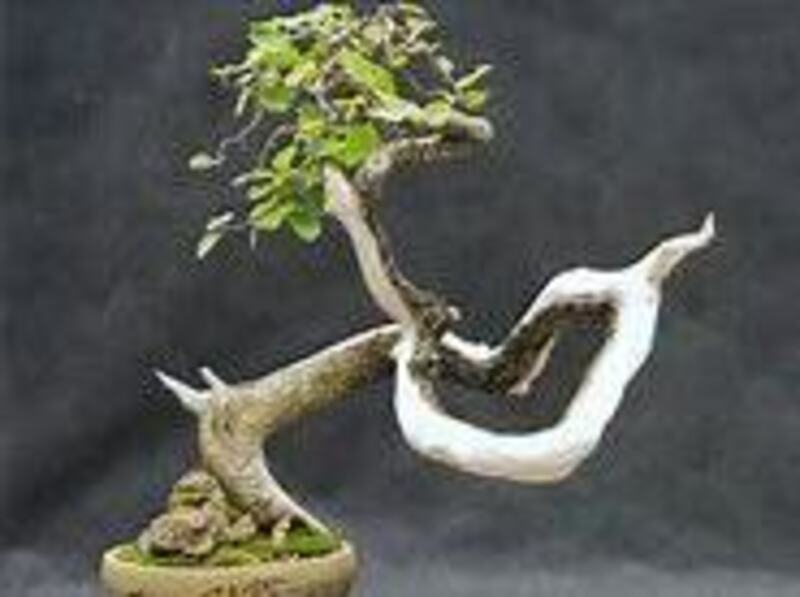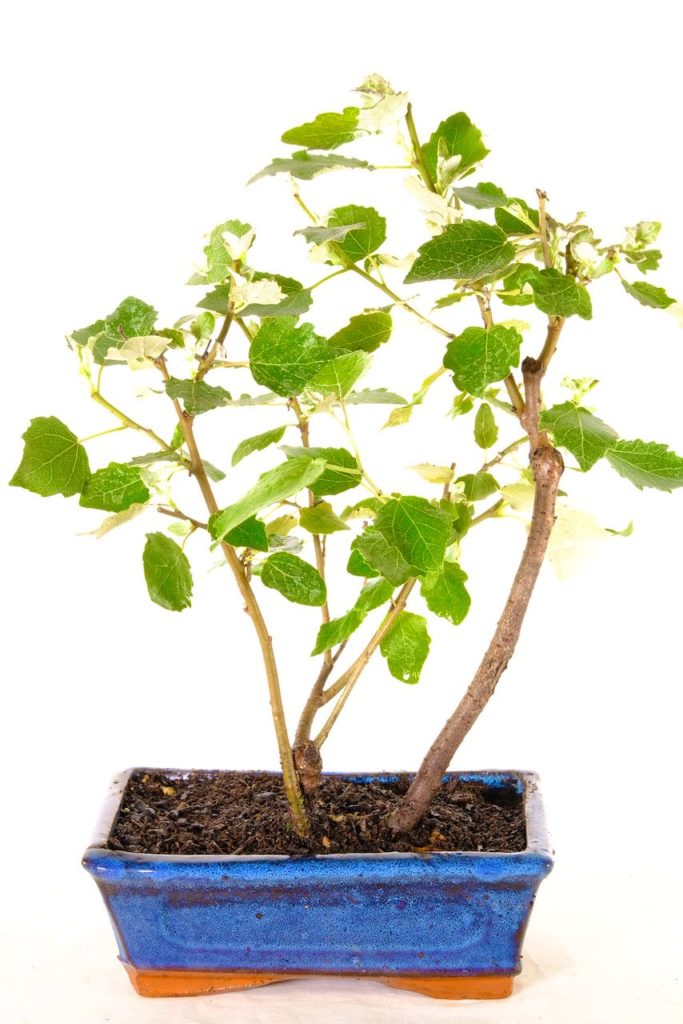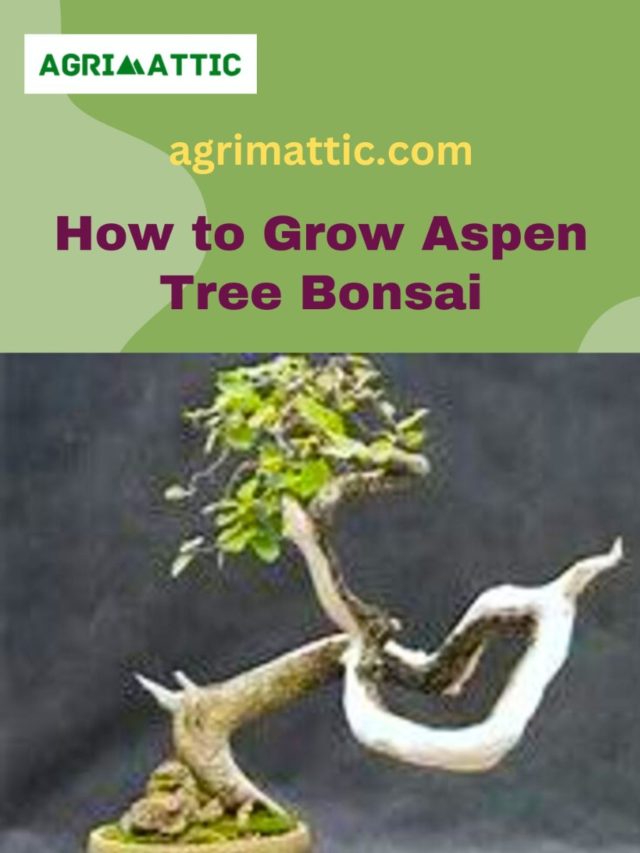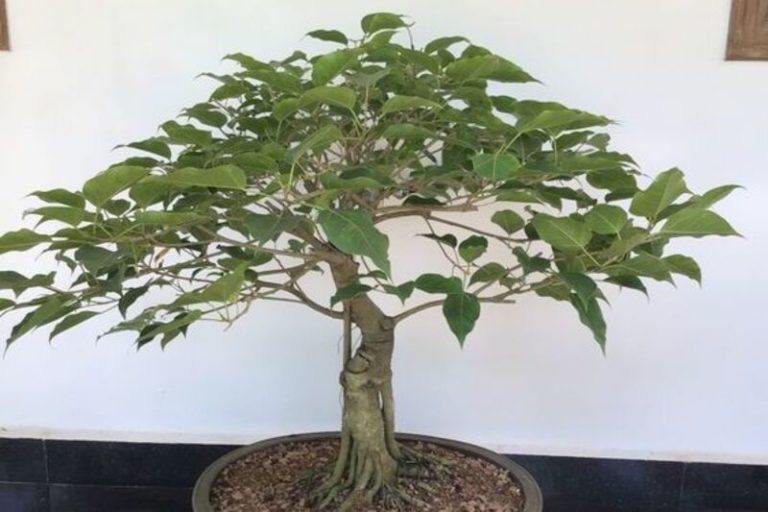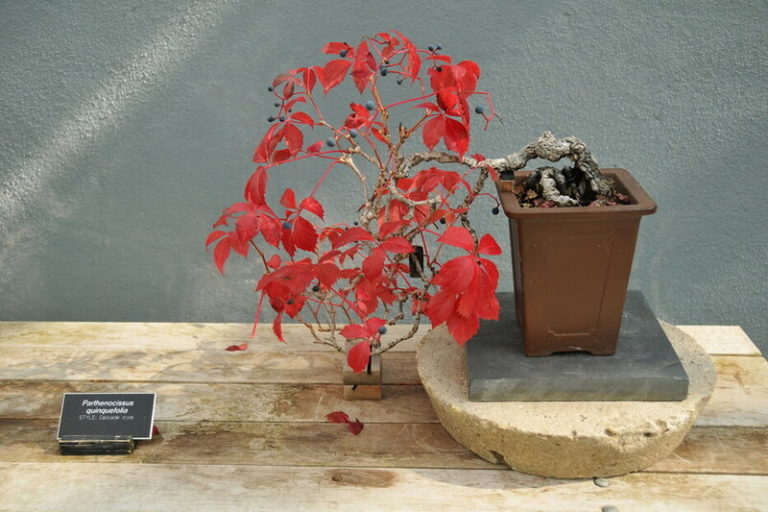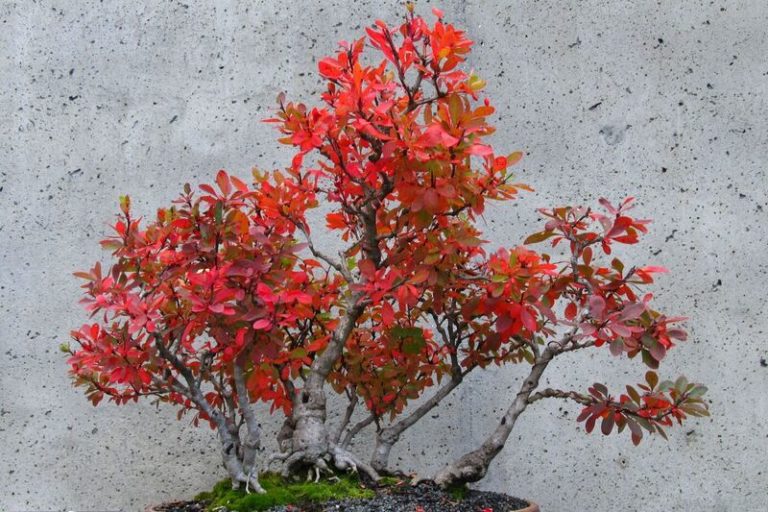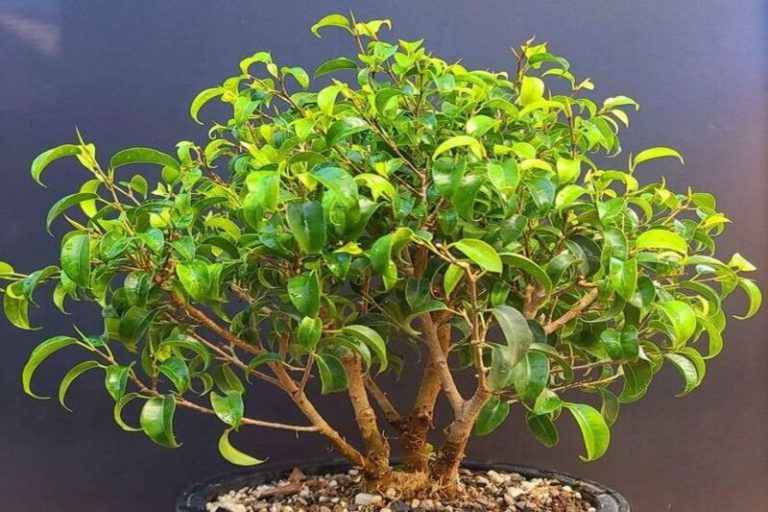Aspen Tree Bonsai: Unveiling the Beauty of Tiny Landscapes
Bonsai trees are like nature’s miniatures, and among them, Aspen Tree Bonsai holds a special place. These tiny trees are not only beautiful but also easy to grow, making them a perfect choice for beginners who want to try their hand at bonsai gardening.
What is Aspen Tree Bonsai?
Aspen tree bonsai is a miniature version of the aspen tree, known for its beautiful, delicate leaves and smooth, white bark. It is relatively easy to care for, making it a good choice for beginners. It’s a miniature tree grown in shallow pots, mirroring the appearance of a full-sized aspen tree. Gardeners use specific methods to maintain its small size and intricate form, making it a popular choice in the art of bonsai.
History and Origins of the Aspen Tree Bonsai
The history of the art of bonsai, which includes the cultivation of Aspen Tree Bonsai, is deeply rooted in ancient Asian cultures. The cultivation of miniature trees in receptacles dates back more than a thousand years. Although the origins of Aspen Tree Bonsai are not well documented, bonsai as a practice has profound historical foundations.
In China during the Tang Dynasty (618-907 A.D.), bonsai was originally referred to as “pun-sai,” which means “tree in a pot.” Chinese academicians and artists introduced the art form to Japan, where it flourished and garnered prominence. Bonsai became an integral element of Zen Buddhism in Japan, symbolizing harmony, balance, and the essence of nature within a confined space.
The cultivation of Aspen Tree Bonsai probably began when the art of bonsai gained prominence in countries outside of Japan. Aspen trees, with their distinctive leaves and elegant appearance, became a favorite among bonsai devotees, particularly in regions where these trees are indigenous or readily acclimatized.
Today, the raising of Aspen Tree Bonsai and other bonsai varieties continues to be an internationally celebrated art form. It exemplifies the majesty of nature in a miniature and meticulously crafted form, combining horticultural expertise, artistic expression, and cultural heritage.
Aspen Tree Bonsai and Their Symbolism
Along with other bonsai plants, the aspen tree bonsai has deep symbolic meanings in Eastern cultures and ideas. Aspen Tree Bonsai usually represents the following, though the meanings can be different based on the person and their beliefs:
Tranquility and Serenity: Aspen Tree Bonsai and other bonsai trees are often linked to peace and quiet. Growing these tiny trees is an art that teaches patience and awareness, just like the peaceful nature of the trees themselves.
Balance and Harmony: The Aspen Tree Bonsai’s careful balance between roots, branches, and leaves shows how different parts of nature can live together in peace. It stands for the balance we try to achieve in our own lives and shows how important it is to have unity and balance.
Endurance and Resilience: Aspen trees, which are known for being able to live and grow in harsh conditions, are a sign of resilience. Aspen Tree Bonsai, in its small size, represents the power to deal with problems and hardships, showing us the value of sticking with things even when they get hard.
Connection to Nature: Aspen Tree Bonsai and other bonsai trees show how connected we are to nature. They tell us of how much we rely on the cycles of nature and how important it is to protect it. Growing and taking care of a bonsai tree makes you feel very responsible for nature.
Reflection of Beauty in Imperfection: The forms and twists of bonsai trees are often very different from one another, which shows how beautiful imperfections can be. This sign helps us love and accept ourselves by showing us that we can accept our flaws and mistakes.
Patience and Time: It takes years of careful care and cutting to grow and shape an aspen tree bonsai. This sign shows how important it is to be patient and stresses that big things take time and hard work. We are reminded to value the steps and road of growth.
The aspen tree bonsai represents peace, balance, strength, our link to nature, accepting our flaws, and the virtues of time and patience. As a live art form, it sends important lessons about life that encourage self-improvement, mindfulness, and a greater appreciation for nature’s beauty.

Characteristics of the Aspen Tree Bonsai
Aspen Tree Bonsai, like its full-sized counterpart, possesses distinctive characteristics that make it a unique and appealing choice for bonsai enthusiasts. Here are some of its notable features:
Distinctive Leaves: Aspen trees are known for having small, heart-shaped leaves that wiggle in the wind. In Aspen Tree Bonsai, these leaves are carefully clipped and cared for to look like they do in the wild. This makes for beautiful, delicate foliage.
Bark Texture: The aspen tree’s bark is smooth and often has black scars on it. Aspen trees that are fully grown have bark that is white to grayish-white. An Aspen Tree Bonsai might have a tiny form of this bark, which makes it more charming.
Fall Colors: Aspen trees are famous for their bright leaves that change colors in the fall, from green to red, yellow, and gold. Aspen Tree Bonsai shows these beautiful fall colors when it is well taken care of and given the right conditions. This adds a fascinating yearly element to its beauty.
Deciduous Nature: Aspen Tree Bonsai, like all aspen trees, is deciduous, which means it loses its leaves in the fall and stays bare all winter. Part of the tree’s beauty and meaning in the world of bonsai is that it grows and then goes dormant.
Graceful Form: Aspen trees stand straight up and have thin branches that make them look beautiful. When growing bonsai, these natural traits are carefully kept and even improved by cutting and wiring, making a bonsai tree that looks as beautiful as its full-sized version.
Hardy Nature: Aspen trees can live in a wide range of temperatures because they are tough and flexible. In the same way, Aspen Tree Bonsai is tough and can grow well with the right care, which makes it a great choice for bonsai fans, especially newcomers.
Miniature Size: One of the most important things about Aspen Tree Bonsai is how small it is. These bonsai trees are kept alive in small pots by carefully growing and training them. This makes them perfect for showing off indoors or outdoors, even in small areas.
Aspen Tree Bonsai is known for its unique leaves, smooth bark, bright fall colors, ability to lose its leaves in the winter, beautiful shape, sturdiness, and small size. These traits, along with the skill of bonsai cultivation, make for an interesting and physically pleasing tiny version of the majestic aspen tree.
How to Grow Aspen Tree Bonsai
Growing Aspen Tree Bonsai can be a rewarding and enjoyable experience. Here’s a step-by-step guide to help you cultivate your own Aspen Tree Bonsai:
Selecting a Healthy Tree:
Choose a young aspen tree sapling from a nursery or collect one from the wild (where permitted by law). Look for a healthy tree with a strong trunk, well-spaced branches, and healthy leaves.
Potting and Soil:
Use a shallow bonsai pot with drainage holes to allow excess water to escape.
Use a well-draining bonsai soil mix, usually a combination of Akadama, pumice, and lava rock. This ensures good aeration and prevents waterlogging.
Repotting:
Repot your Aspen Tree Bonsai every 2-3 years, typically during early spring before new growth appears. Repotting helps refresh the soil and prevents root-bound conditions.
Trim the roots moderately to maintain a balanced root-to-foliage ratio.
Pruning and Shaping:
Prune the branches and leaves regularly to maintain the desired shape. Use sharp pruning shears to avoid damaging the tree.
Wiring can be employed to gently shape branches. However, aspen trees have delicate branches, so be careful not to apply too much pressure.
Watering:
Aspen trees prefer moist, but not waterlogged, soil. Water the bonsai thoroughly when the topsoil feels slightly dry to the touch. Ensure that excess water can drain away.
Avoid letting the soil completely dry out, as aspen trees, like all bonsai, need consistent moisture.
Sunlight:
Place your Aspen Tree Bonsai in a location that receives partial sunlight. These trees enjoy sunlight but should be protected from intense afternoon sun, especially in hotter climates.
Fertilization:
Use a balanced liquid fertilizer during the growing season (spring to early autumn) every 2-4 weeks. Reduce or stop fertilizing during the winter months.
Winter Care:
Aspen Tree Bonsai, like its full-sized counterpart, requires a period of winter dormancy. Place the bonsai in a cool, sheltered spot and reduce watering. Protect it from freezing temperatures, especially if you live in colder regions.
Pest and Disease Management:
Keep an eye out for common bonsai pests like aphids and spider mites. Treat infestations promptly with insecticidal soap or neem oil.
Ensure good air circulation to prevent fungal diseases.
Patience and Observation:
Bonsai cultivation is an art that requires patience and observation. Regularly observe your Aspen Tree Bonsai, adjust care routines as needed, and enjoy the process of shaping your miniature tree.
By following these steps and giving your Aspen Tree Bonsai the care and attention it needs, you can grow a beautiful and healthy miniature representation of this elegant tree species.
Displaying and Showcasing the Aspen Tree Bonsai
Displaying and showcasing your Aspen Tree Bonsai is an important aspect of bonsai cultivation, allowing you to appreciate its beauty and share it with others. Here are some tips on how to effectively display and showcase your Aspen Tree Bonsai:
1. Choosing the Right Pot and Stand:
Select a bonsai pot that complements the size and style of your Aspen Tree Bonsai. Traditional earthy tones like browns and greens often work well.
Consider placing your bonsai on a display stand or a small table to elevate it and create an eye-catching focal point.
2. Arranging with Other Elements:
Create a harmonious composition by placing your Aspen Tree Bonsai alongside small decorative elements such as rocks, figurines, or miniature pathways.
Utilize accent plants like moss or small flowering plants to add color and texture to the display.
3. Choosing Display Locations:
Place your Aspen Tree Bonsai in a location with filtered sunlight. A spot with bright, indirect light is ideal, avoiding direct afternoon sun that may scorch the leaves.
Consider rotating your bonsai occasionally to ensure all sides receive equal sunlight, promoting balanced growth.
4. Seasonal Changes:
Embrace the natural beauty of your Aspen Tree Bonsai’s changing foliage. Position it in a place where you can admire its vibrant fall colors during the autumn.
During the winter, protect your bonsai from freezing temperatures and harsh winds. Display it indoors or in a sheltered area.
5. Regular Pruning and Maintenance:
Keep your Aspen Tree Bonsai well-maintained with regular pruning and shaping. Trim any overgrown branches or leaves to maintain its miniature form.
Remove dead or yellowing leaves promptly to keep the bonsai looking vibrant and healthy.
6. Showcasing in Bonsai Exhibitions:
Participate in local bonsai exhibitions to showcase your Aspen Tree Bonsai to a wider audience.
Prepare your bonsai for exhibition by grooming it meticulously, ensuring the pot and stand are clean, and placing it in an aesthetically pleasing arrangement.
7. Sharing Your Knowledge:
Share your knowledge and passion for Aspen Tree Bonsai with others. Consider hosting small bonsai workshops or inviting friends and family to admire your collection.
Document your bonsai’s growth and share it on social media platforms or bonsai enthusiast forums to connect with fellow enthusiasts.
Remember, the way you display your Aspen Tree Bonsai is a personal expression of your creativity and appreciation for nature. Experiment with different arrangements and settings to find the most visually appealing and harmonious display for your miniature masterpiece.
How to Care for and Maintain an Aspen Tree Bonsai
Caring for and maintaining an Aspen Tree Bonsai requires attention to detail and a consistent regimen. Here are some essential care tips to keep your Aspen Tree Bonsai healthy and thriving:
1. Watering:
Consistent Moisture: Aspen Tree Bonsai prefers consistently moist soil. Water the bonsai thoroughly when the topsoil feels slightly dry to the touch. Ensure proper drainage to prevent waterlogging, which can lead to root rot.
Avoid Water Stagnation: Empty the saucer under the pot after watering to prevent the roots from sitting in standing water.
2. Sunlight:
Partial Sunlight: Place your Aspen Tree Bonsai in a location with filtered sunlight. While aspen trees enjoy sunlight, they should be protected from intense afternoon sun, especially in hot climates. A few hours of morning sun or dappled light is ideal.
3. Pruning and Shaping:
Regular Pruning: Prune your bonsai to maintain its shape and remove unwanted branches or leaves. Use sharp, clean tools to make precise cuts.
Wiring: Use wiring techniques to shape branches gently. However, aspen trees have delicate branches, so be cautious not to apply too much pressure to avoid damage.
4. Fertilization:
Balanced Fertilizer: Use a balanced liquid fertilizer during the growing season (spring to early autumn) every 2-4 weeks. Reduce or stop fertilizing during the winter months when the tree is dormant.
Organic Matter: Consider organic fertilizers, which release nutrients slowly and promote the overall health of the tree.
5. Repotting:
Repot Every 2-3 Years: Repot your Aspen Tree Bonsai every 2-3 years, typically in early spring before new growth appears. Repotting refreshes the soil, prevents root-bound conditions, and promotes healthy growth.
Root Pruning: During repotting, trim the roots moderately to maintain a balanced root-to-foliage ratio.
6. Winter Care:
Winter Dormancy: Aspen Tree Bonsai, like all deciduous trees, requires a period of winter dormancy. Place the bonsai in a cool, sheltered spot during the winter and reduce watering. Protect it from freezing temperatures.
Protection from Cold: In cold regions, protect the tree from frost by placing it in a garage or covering it with frost cloth.
7. Pest and Disease Management:
Vigilant Monitoring: Regularly inspect your bonsai for signs of pests like aphids or diseases like powdery mildew. Treat infestations promptly with insecticidal soap or appropriate fungicides.
Proper Ventilation: Ensure good air circulation around the bonsai to prevent fungal issues.
8. Observation and Patience:
Regular Observation: Observe your Aspen Tree Bonsai regularly. Adjust your care routine based on its response to watering, sunlight, and other factors.
Patience: Bonsai care is a patient and gradual process. Allow the tree time to adapt to changes and grow naturally.
By following these care guidelines and paying attention to the specific needs of your Aspen Tree Bonsai, you can nurture a healthy, vibrant, and beautifully shaped miniature tree. Remember, each bonsai is unique, so tailor your care routine to the individual characteristics and requirements of your tree.

Aspen Tree Bonsai Care Sheet
| Aspect | Care Tips |
| Watering | – Keep the soil consistently moist, but not waterlogged. Water thoroughly when the topsoil feels slightly dry to the touch. Ensure proper drainage. – Water more frequently during hot, dry periods, and reduce watering during winter when the tree is dormant. |
| Sunlight | – Place the bonsai in a location with filtered sunlight. Protect from intense afternoon sun, especially in hot climates. – Provide morning sun or dappled light for a few hours daily. Rotate the bonsai regularly for even sunlight exposure. |
| Temperature | – Aspen trees tolerate a wide range of temperatures, but protect the bonsai from extreme cold. During winter, place it in a cool, sheltered spot and safeguard it from frost. – Avoid sudden temperature fluctuations, which can stress the tree. |
| Humidity | – Aspen Tree Bonsai prefers moderate humidity. Mist the tree occasionally, especially in dry indoor environments. – Consider placing a humidity tray filled with water and pebbles beneath the bonsai to increase local humidity. |
| Fertilization | – Use a balanced liquid fertilizer during the growing season (spring to early autumn). Apply every 2-4 weeks, following the recommended dosage. – Use organic fertilizers for slow, steady nutrient release. Avoid over-fertilizing to prevent root burn. |
| Pruning and Trimming | – Regularly prune to maintain shape and remove dead or unwanted branches. Use clean, sharp tools for precise cuts. – Trim yellow or diseased leaves promptly. Prune during the growing season for optimal recovery. |
| Wiring and Styling | – Use wiring techniques for gentle shaping. Be cautious with delicate branches; they can break easily. – Style the bonsai gradually, allowing it to adapt between wiring sessions. Avoid excessive bending to prevent damage. |
| Repotting | – Repot every 2-3 years, typically in early spring. Trim the roots moderately to maintain balance. – Use well-draining bonsai soil mix. After repotting, provide shade for a few weeks to reduce stress. |
| Pest and Disease Control | – Regularly inspect for pests like aphids or diseases like powdery mildew. Treat infestations promptly with insecticidal soap or appropriate fungicides. – Maintain good air circulation to prevent fungal issues. Neem oil can act as a preventive measure. |
| Winter Care | – During winter, place the bonsai in a cool, sheltered spot. Reduce watering but ensure the soil doesn’t completely dry out. – Protect from freezing temperatures. Consider indoor placement in colder regions. |
| Regular Maintenance | – Continuously observe the bonsai’s growth, adjusting care routines as needed. – Regularly clean the pot, removing debris and old soil, to prevent pests and diseases. – Patience and consistency are key; allow the tree time to adapt and thrive. |
Following these care tips for each aspect will help you maintain a healthy and vibrant Aspen Tree Bonsai. Remember that each bonsai is unique, so closely observe your tree’s response to different care practices and adjust accordingly.
Conclusion
Growing Aspen Tree Bonsai is a delightful and rewarding hobby. It teaches patience, care, and the beauty of nature in small forms. Whether you’re a beginner or an experienced gardener, Aspen Tree Bonsai offers a chance to create living art effortlessly. So, why not start your bonsai journey today? With a little love and attention, you can enjoy the charm of Aspen Tree Bonsai right in your home. Happy gardening!
FAQ
Q: What is an Aspen Tree Bonsai?
A: Aspen Tree Bonsai is a miniature version of the aspen tree cultivated through bonsai techniques. It’s a small, elegant tree that captures the essence of a full-sized aspen tree in a confined space.
Q: Can I grow Aspen Tree Bonsai indoors?
A: Yes, Aspen Tree Bonsai can be grown indoors, but it requires proper sunlight. Place it near a window where it can receive bright, indirect sunlight. Consider using a grow light if natural light is insufficient.
Q: How often should I water my Aspen Tree Bonsai?
A: Watering frequency depends on factors like temperature and humidity. As a general rule, water your Aspen Tree Bonsai when the topsoil feels slightly dry. Ensure good drainage to prevent waterlogged roots.
Q: Can Aspen Tree Bonsai be kept outdoors?
A: Yes, Aspen Tree Bonsai can be kept outdoors. However, protect it from extreme weather conditions. During winter, shield it from frost, and during summer, provide shade during the hottest part of the day.
Q: How do I prune my Aspen Tree Bonsai?
A: Regular pruning is essential for shaping and maintaining your bonsai. Use sharp, clean tools to trim branches and leaves. Prune during the growing season, and avoid cutting more than one-third of a branch at a time.
Q: When should I repot my Aspen Tree Bonsai?
A: Repot your Aspen Tree Bonsai every 2-3 years, typically in early spring before new growth appears. Repotting helps refresh the soil and prevent root-bound conditions. Trim the roots moderately during repotting.
Q: How do I protect my Aspen Tree Bonsai from pests?
A: Regularly inspect your bonsai for pests like aphids or diseases like powdery mildew. Treat infestations promptly with insecticidal soap or appropriate fungicides. Maintaining good air circulation helps prevent fungal issues.
Q: Can Aspen Tree Bonsai change color in the fall?
A: Yes, Aspen Tree Bonsai, like its full-sized counterpart, can display vibrant fall foliage. With proper care, it may turn shades of gold, yellow, and red during the autumn season, enhancing its visual appeal.
Q: Can I wire my Aspen Tree Bonsai for shaping?
A: Yes, wiring can be used to shape your Aspen Tree Bonsai. However, aspen trees have delicate branches, so be gentle when wiring to avoid damaging them. Wiring is typically done during the growing season.
Q: How long does it take for Aspen Tree Bonsai to mature?
A: The time it takes for Aspen Tree Bonsai to mature varies based on factors such as age, care, and environment. Generally, bonsai trees, including Aspen Tree Bonsai, require several years to achieve a mature and aesthetically pleasing appearance. Patience and consistent care are essential in the bonsai cultivation journey.
Also Read:

